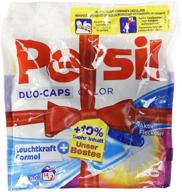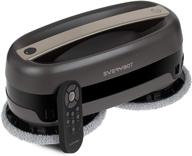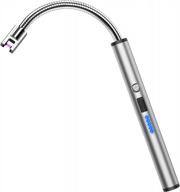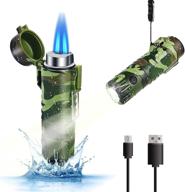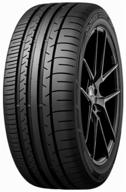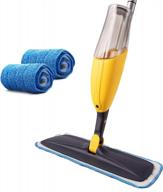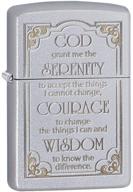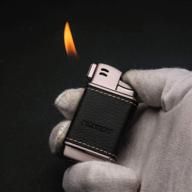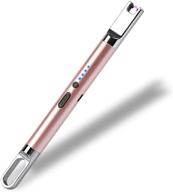Types of Lighters
Lighters provide a portable and convenient way to create a flame for lighting cigarettes, candles, grills, and more. There are several main types of lighters available that run on different fuel sources.
Similar products
Disposable Lighters
Disposable lighters, sometimes called convenience lighters, are designed to be used until the fuel runs out and then discarded. They are one of the most common and affordable types of lighters.
- Use pressurized liquid gas fuel like butane or propane
- Plastic body and metal wire or coil for ignition
- Cost between $1-$2 per lighter
Pros:
- Inexpensive
- Readily available
- Require no maintenance
Cons:
- Not refillable
- Less durable construction
Refillable Lighters
Refillable lighters can be reused over and over by refueling them when empty. They are a more economical option than disposables over time.
- Use butane or other pressurized gas fuel
- Metal body with ignition button or wheel
- Cost $5-$30+ depending on materials/quality
Pros:
- Lower long-term cost
- Sturdy, durable materials
- Customizable with engraving
Cons:
- Higher upfront cost
- Require periodic maintenance
Electric Lighters
Electric lighters use an electric charge to create a spark and ignite fuel. Many are rechargeable via USB.
- Use electricity rather than combustible fuel
- Rechargeable battery powers ignition
- Cost $10-$100+
Pros:
- Reusable
- Consistent performance
- Wind and water resistant
Cons:
- Must be charged
- Higher initial cost
Butane Lighters
Butane lighters use pressurized liquid butane as the main fuel source. Butane produces a hot, clean burning flame.
- Refined from petroleum, burns cleanly
- Disposable or refillable varieties
- Cost $3-$50+
Pros:
- Consistent, adjustable flame
- Odorless and tasteless
Cons:
- Butane can evaporate over time
- Freezing temperatures impact performance
With various options from disposable to high-end refillable models, there is a lighter type suitable for any usage need and budget.
Top products in 🔥 Lighters & Matches
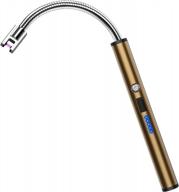

14 Review

Choosing the Right Lighter
With the variety of lighter styles and fuels available, it's important to consider your needs and preferences when selecting the right lighter for you.
Size and Portability
If you need a lighter for on-the-go use, portability is key:
- Small, pocket-sized lighters are easily portable.
- Keychain lighters attach for convenience.
- Avoid bulkier torch or tabletop lighters.
Flame Type
The flame produced by a lighter varies:
| Flame Type | Characteristics |
|---|---|
| Torch | Powerful, direct flame. Good for lighting pipes or cigars. |
| Soft flame | Gentle, low-intensity flame. Ideal for candles or kitchen use. |
| Adjustable | Flame size can be controlled. Provides flexibility. |
Fuel Type
Common lighter fuel types:
- Butane - Odorless, clean burning, and efficient.
- Liquid propane - Affordable but can alter taste.
- Rechargeable electric - No fuel hassles.
Safety Features
Safety is critical when selecting a lighter:
- Child safety locks prevent accidental ignition.
- Clear fuel windows indicate fuel level.
- Built-in stands increase stability on surfaces.
Prioritize your portable fire needs, and choose a lighter that best fits your lifestyle and habits.
Size and Portability of Lighters
When selecting a lighter, considering its size and portability is important if you plan to carry and use it on the go.
Pocket-Sized Lighters
The most portable lighter options are designed to fit conveniently in a pocket or small bag:
- Small plastic disposable lighters are just a few inches tall.
- Slim metal flip-top lighters slide into a pocket.
- Keychain lighters attach to keys for easy access.
These miniature sized lighters are ideal for lighting cigarettes or other quick tasks while out and about.
Mid-Sized Lighters
Mid-sized lighters offer greater fuel capacity and usability while remaining reasonably portable:
- Rectangular lighters fit in most pockets.
- Oval lighters with wrist straps are easy to carry.
- Palm-sized lighters are quick to maneuver.
The compact shape makes these lighters a versatile choice for portable lighting.
Another interesting products
Larger Lighters
While convenient for stationary use, larger lighters are less ideal for portability:
- Tabletop lighters require a flat surface.
- Torch lighters are 6 inches tall or more.
- Heavy fuel lighters have significant heft.
Carrying these bulkier lighters can be cumbersome and may not be practical for mobile use.
Key Considerations
To choose the most portable lighter for your needs:
- Consider the size of pockets or bags you'll store it in.
- Think about situations where you'll use it.
- Test different sizes for comfortable carry.
Selecting a properly sized lighter will ensure lighting capability while retaining portability.
Using and Maintaining Your Lighter
With proper care and maintenance, a quality lighter can provide years of reliable service. Here are some tips for getting the most out of your lighter:
Filling and Refilling
Refillable lighters require occasional filling to replenish fuel:
- Butane lighters are refilled from pressurized butane cans.
- Use caution when refilling - avoid overfilling.
- Let newly refilled lighters sit for a few minutes before using.
Flint and Spark Wheel Care
The flint and spark wheel work together to create the ignition spark:
- Replace flints when worn down or failing to spark.
- Clean the spark wheel of dirt or residue buildup.
- Old sparks wheels may need replacement over time.
Troubleshooting Issues
Common lighter problems and solutions:
- Weak flame - Refill fuel or adjust flame height.
- No spark - Replace flint or clean/replace spark wheel.
- Fuel leaks - Ensure valves are closed tightly or replace seals.
General Care Tips
- Keep lighters dry and away from extreme heat or cold.
- Wipe off butane residue after filling.
- Perform occasional deep cleanings with compressed air.
- Store in a protective case when not in use.
Well-maintained lighters can work for years. With periodic upkeep and proper storage, your lighter will provide a reliable flame whenever needed.
How to Buy Lighters & Matches with Amazon Prime
Amazon Prime provides fast, free shipping on over 100 million products, making it a convenient way to shop for essentials like lighters and matches.
Find Eligible Products
When browsing lighters and matches on Amazon.com, look for the "Prime Eligible" tag. This indicates the item qualifies for Prime's free two-day shipping.
Search for products using keywords like "lighter," "match," "butane," or brand names. Use filters to narrow results by item features like fuel type, ignitions type, safety features, number of matches, etc.
Confirm Your Prime Membership
Make sure your Prime membership is active to enjoy free shipping. Log into your Amazon account and visit Your Account > Memberships & Subscriptions to confirm.
If not a Prime member, consider signing up for a 30-day free trial to test the benefits.
Add to Cart & Check Out
When you've found your desired lighters or matches, add them to your cart. Proceed through checkout, selecting "FREE Two-Day" shipping when prompted.
For the fastest delivery, choose items shipped directly from Amazon rather than third-party sellers.
Select Delivery Address
Amazon will ship Prime orders for free to your default address. Make sure this address is up-to-date for timely delivery.
You can ship to other addresses as well, though some restrictions apply.
Track Your Order
Once your lighter and match order ships out, you'll receive tracking information to follow its progress.
Log into your Amazon account anytime to view recent orders and track deliveries.
With just a few clicks, Amazon Prime makes stocking up on fire starting essentials quick and convenient.
Market Share Of Lighters And Matches In Tobacco Industry 2020
According to, the global cigarette lighter market size reached US$ 6.2 Billion in 2022 and is expected to reach US$ 7.0 Billion by 2028. The global pocket lighter market size was valued at USD 6.08 billion in 2021 and is expected to grow at a compound annual growth rate (CAGR) of 2.9% from 2022 to 2028. The plastic segment accounted for the highest revenue share of over 65% in 2021, and plastic-made lighters have a large demand in the global market, as they are lightweight, economical, efficient, durable, and reusable too. The global cigarette lighter market reached a value of USD 5107 Million in 2020 and is further expected to reach USD 6606 Million by 2026. Cigarette lighters are mostly distributed through tobacco shops, which account for the majority of the total market share. The consumption of tobacco products is primarily responsible for the rise in popularity of pocket lighters.
Market Share Of Lighters And Matches In Tobacco Industry 2020 Chart
Unfortunately, I could not find a chart that specifically shows the market share of lighters and matches in the tobacco industry for the year 2020. However, according to the sources, the global cigarette lighter market size reached US$ 6.2 Billion in 2022 and is expected to reach US$ 7.0 Billion by 2028. The global pocket lighter market size was valued at USD 6.08 billion in 2021 and is expected to grow at a compound annual growth rate (CAGR) of 2.9% from 2022 to 2028. Flint is the largest contributor to the market with a share of over 60% in global revenue in 2021. The plastic segment accounted for the highest revenue share of over 65% in 2021. Asia Pacific dominated the pocket lighter market with a share of 52.3% in 2021. The consumption of tobacco products is primarily responsible for the rise in popularity of pocket lighters.





